The KüblerRoss Change Curve — The Stress Less Company

The Change Curve Archives The Art Of Positive Change
The Kubler-Ross change curve outlines the five stages of grief as follows: Denial Anger Bargaining Depression
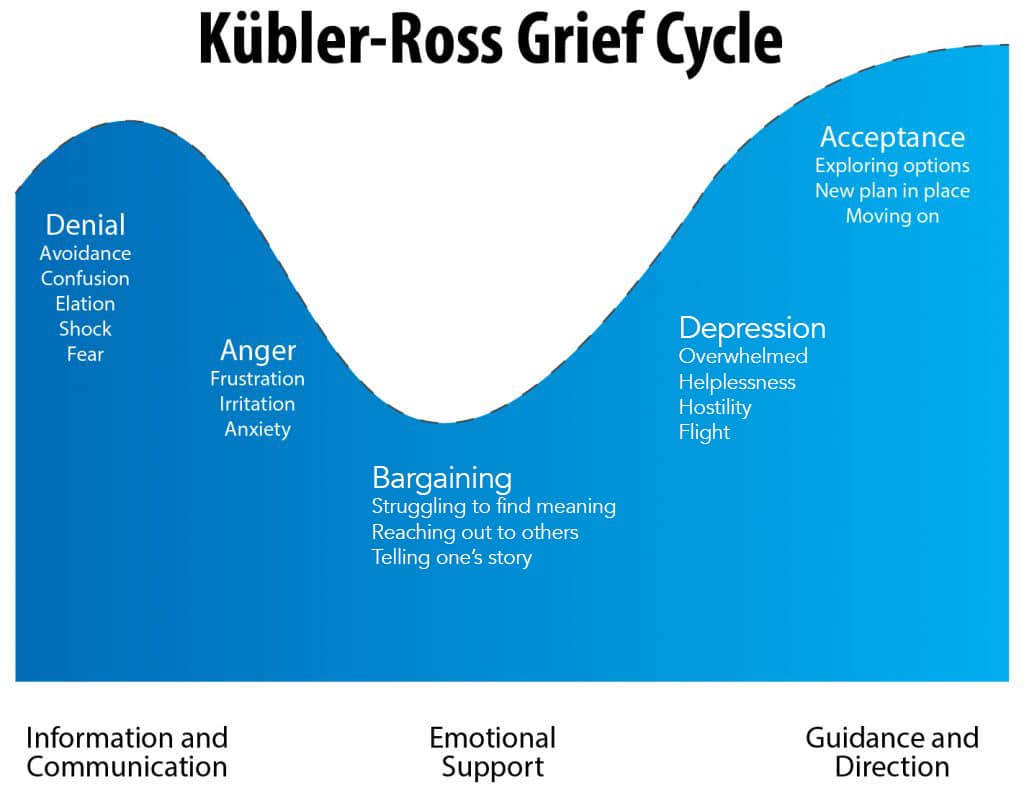
Models KüblerRoss Change Curve Sergio Caredda
It's often attributed to psychiatrist Elisabeth Kubler-Ross, resulting from her work on personal transition in grief and bereavement. Note 2: Here we're describing major change, which may be genuinely traumatic for the people undergoing it. If change is less intense, adjust the approach appropriately.
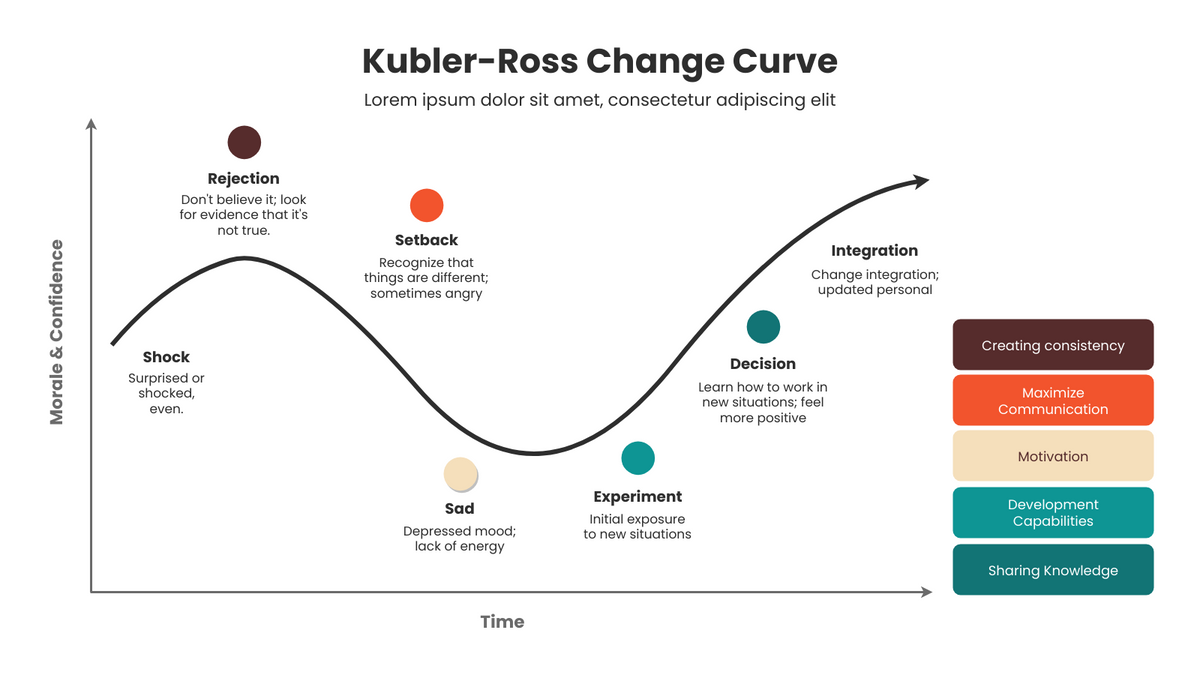
The KublerRoss Change Curve KublerRoss Change Curve Template
The Kubler-Ross Change Curve is a model that enables us to adapt to change and navigate transitions. It can not only help us deal with change on a personal level but it can also be effectively used by businesses to empower their workforce to manage change and succeed. Daniel adds "Use Kubler-Ross's research to understand how people navigate change.
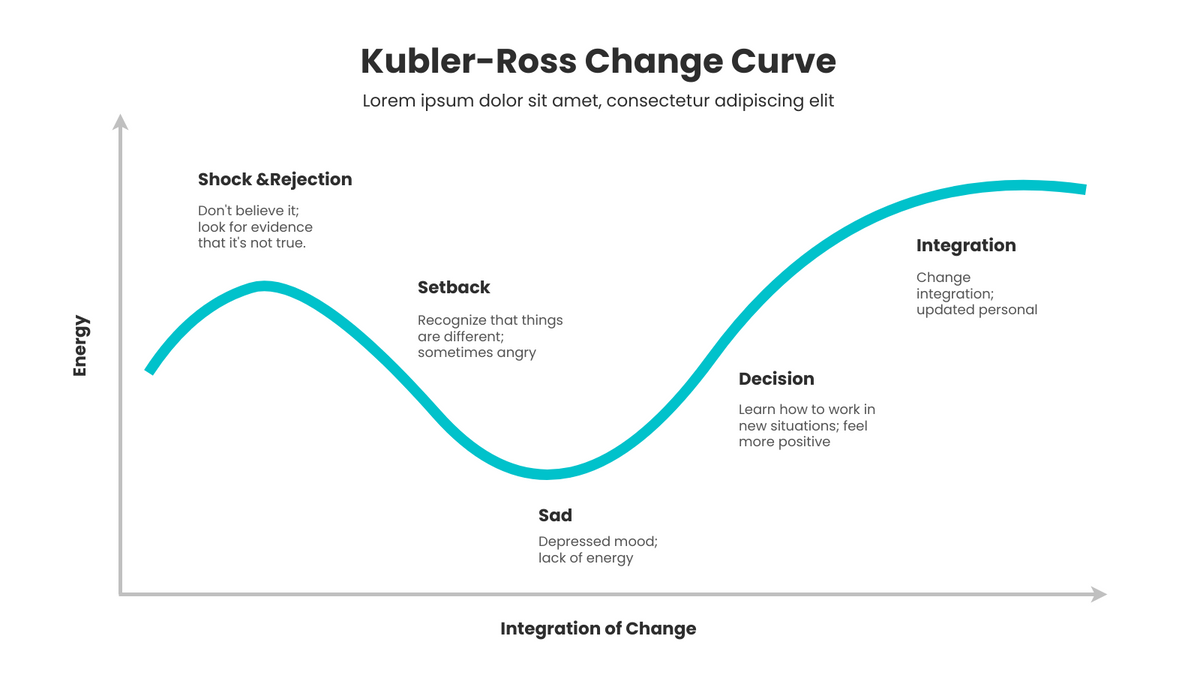
Stages Of KublerRoss Change Curve KublerRoss Change Curve Template
The change curve is based on a model of the five stages of grief -denial, anger, bargaining, depression and acceptance-originally described by Elisabeth Kübler-Ross in her 1969 book On Death and Dying.

kublerross_change_curve2 Differently Wired
Kübler-Ross' Five Stage Change Curve Model is a popular method of understanding the process of change and how people respond to it. The model was developed by Swiss-American psychiatrist Elisabeth Kübler-Ross, who first presented her ideas during a conference in 1969 after working with terminally ill patients for many years.
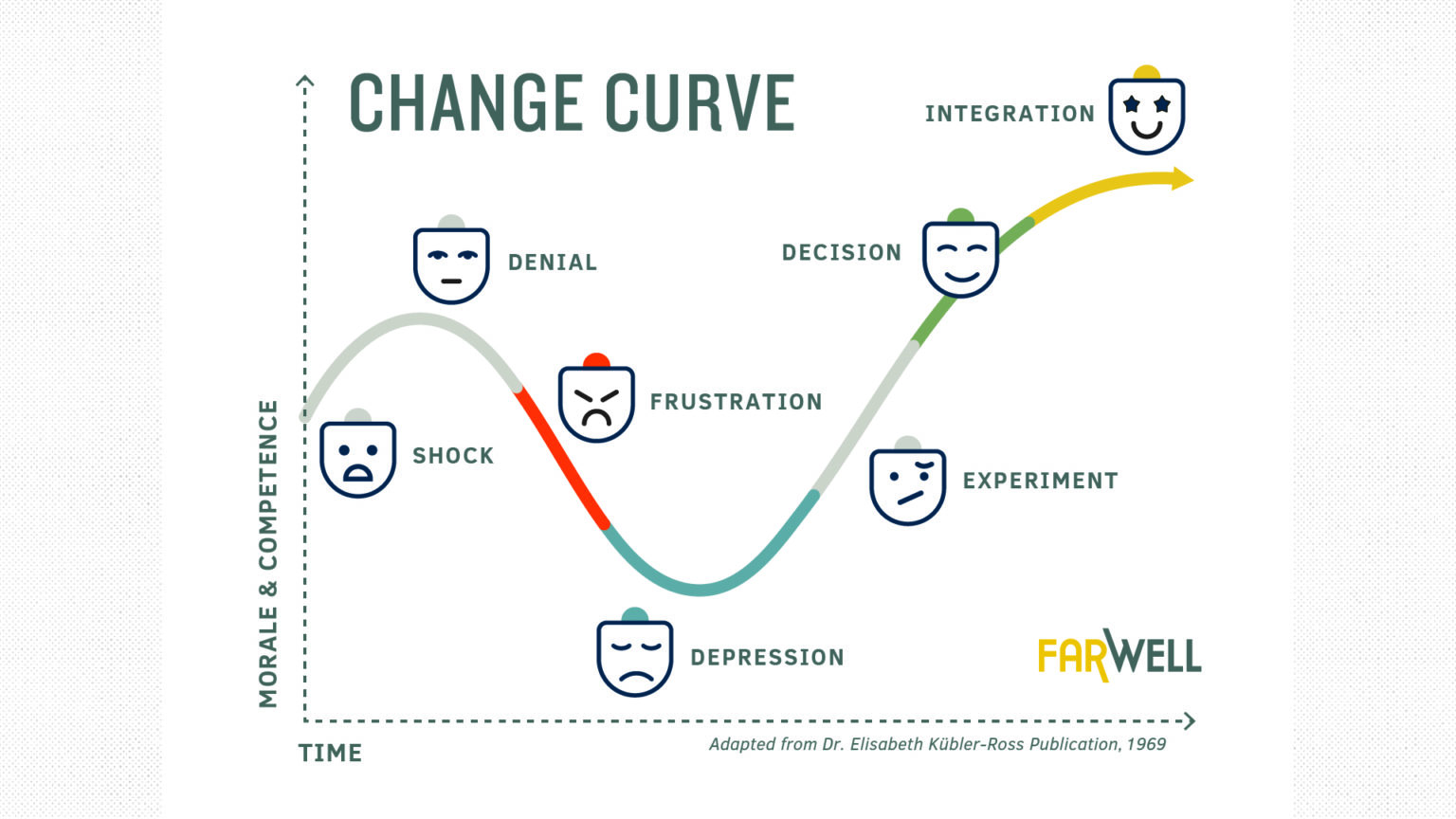
Free KüblerRoss Change Curve Change Management Tool download for leaders FarWell
Kübler-Ross Change Curve The Kübler-Ross Change Curve is helpful in understanding reactions and feelings in relation to change. It assists people in plotting their individual reactions and to engage in discussion to assist them to address their concerns and maximise their contribution. Shock - losing focus Numbness daze Turbulent time
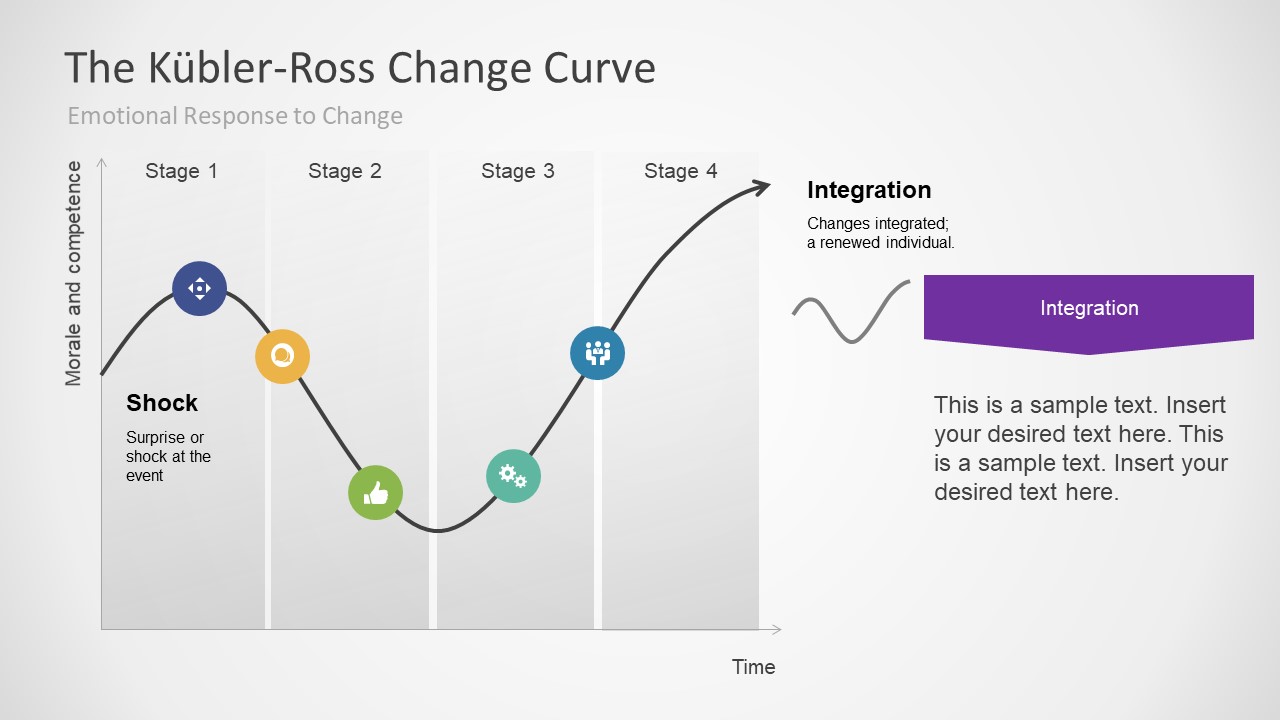
Kubler Ross Change Curve for PowerPoint
According to the model of the five stages of grief (or the Kübler-Ross model ), those experiencing grief go through five emotions: denial, anger, bargaining, depression and acceptance.

Understanding the KüblerRoss Change Curve in relation to business and Covid19 CMG Change
A response by human to such situations is explained by a Swiss psychiatric Elisabeth Kubler Ross who developed a model which is also widely known Kubler-Ross Change Curve or 5 Stages of Grief and Loss.
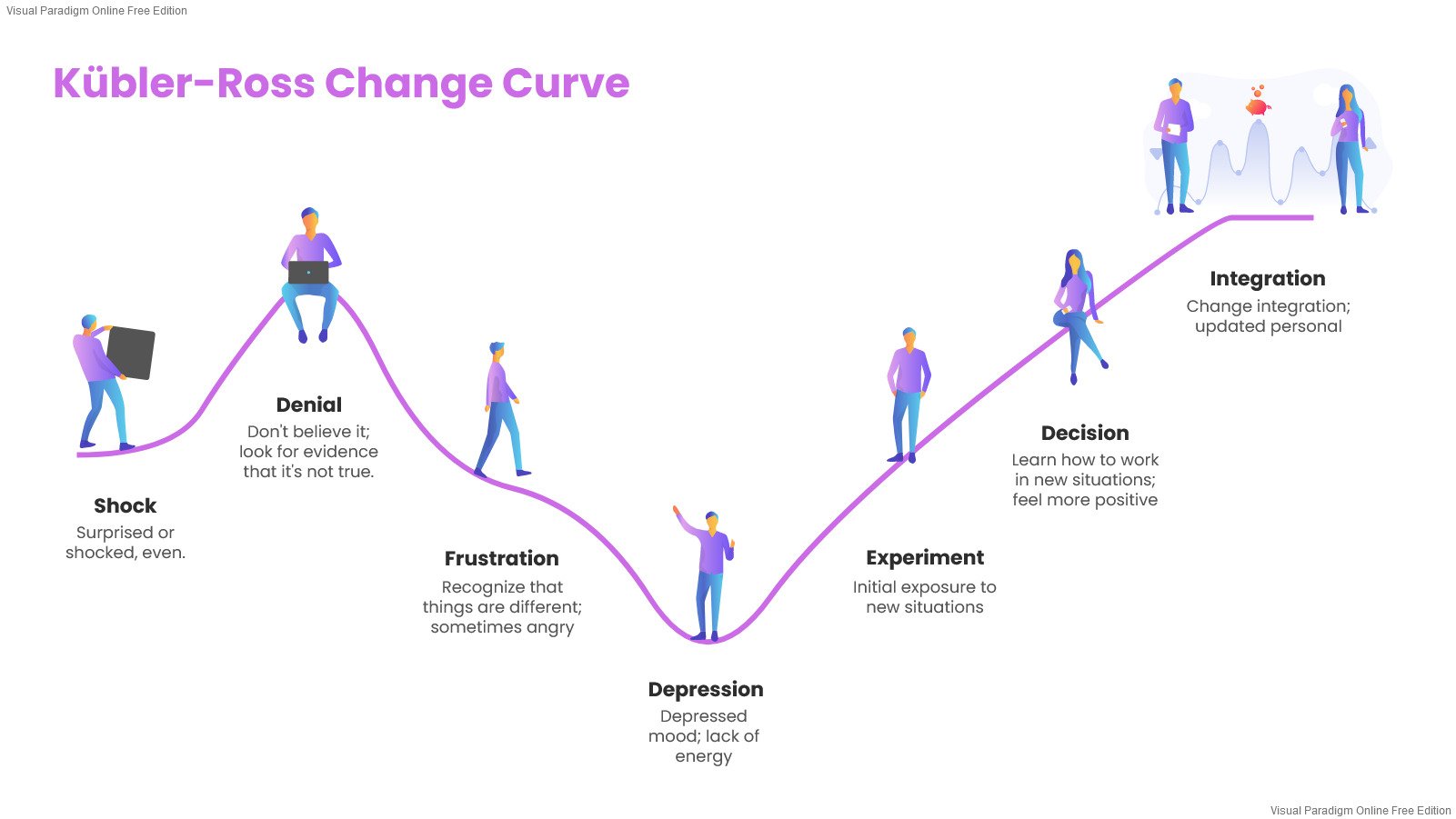.jpg)
The KüblerRoss Change Curve — The Stress Less Company
An Updated Kubler-Ross Change Curve. Kubler-Ross proposes that a terminally ill patient goes through five stages of grief after learning of his or her condition. She further proposed that this model could be applied to any dramatic life change situation. The first five stages of shock & denial, anger, bargaining, depression and acceptance.
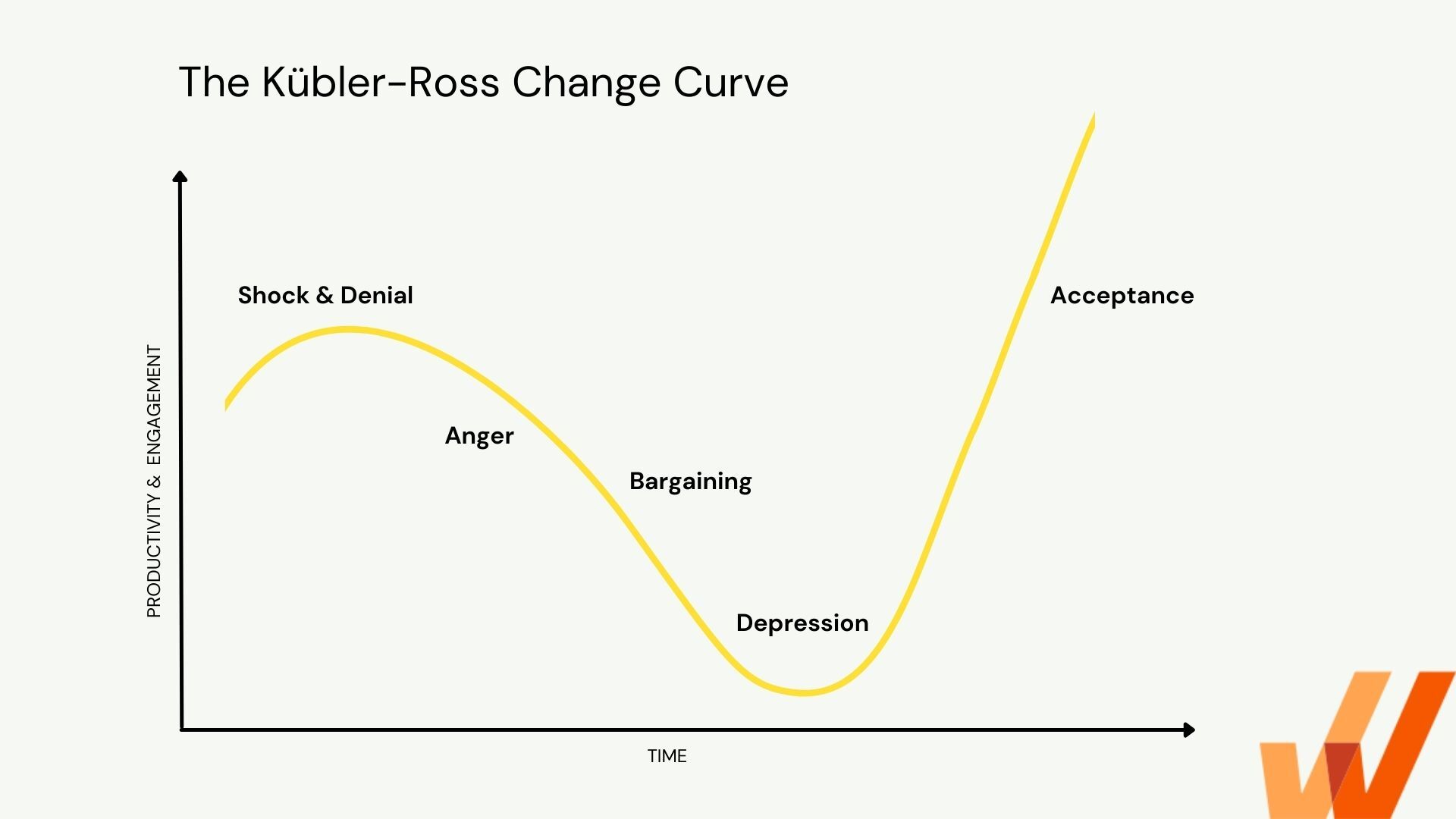
The Kübler Ross Change Curve in the Workplace (2024) Whatfix
The Change Curve, or Kübler Ross' Change Curve Model, was created by the Swiss-American psychiatrist Elisabeth Kübler-Ross in 1969. It depicts 5-stages of grief denial, anger, bargaining, depression, and acceptance.

Crocus Coaching and Development » TheChangeCurve[1]
BBC News Denial. Anger. Bargaining. Depression. Acceptance. Everyone knows the theory that when we grieve we go through a number of stages - it turns up everywhere from palliative care units to.
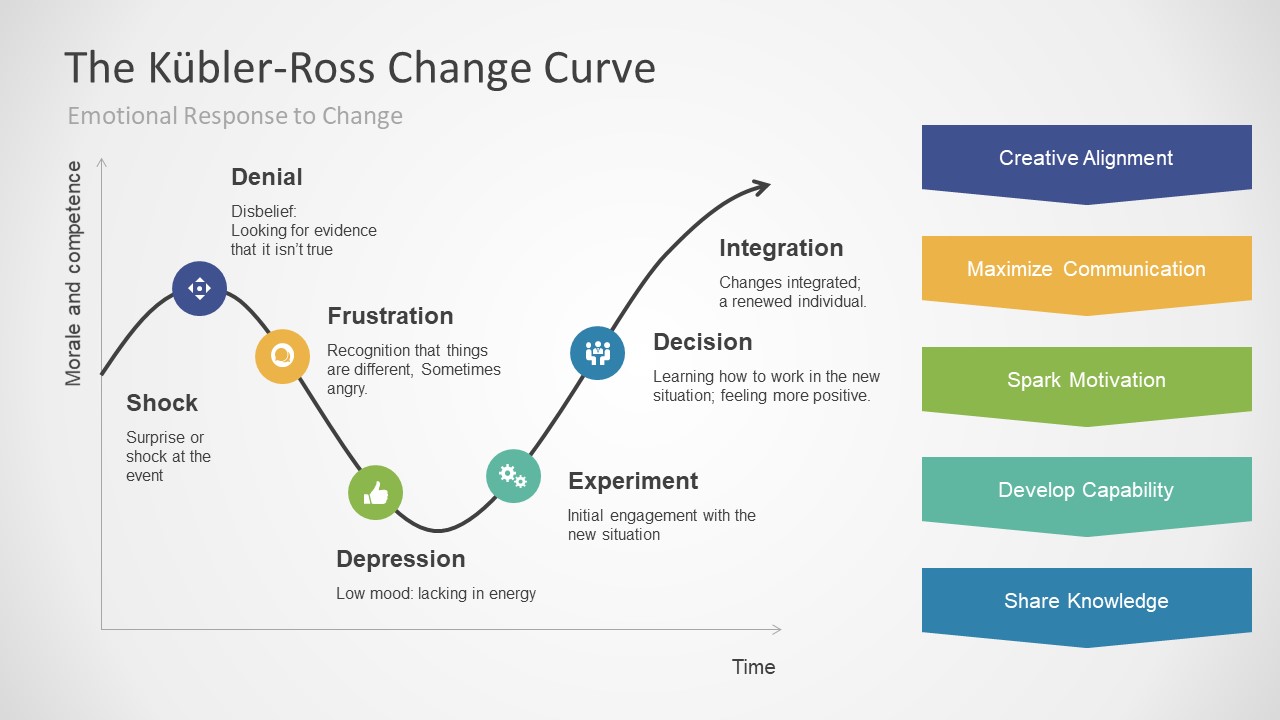
Kubler Ross Change Curve for PowerPoint
That's because the Kübler-Ross Change Curve™ is also known as the five stages of grief, which seek to describe the series of powerful emotions human beings experience in the process of losing a loved one or as we approach death ourselves. The five stages of grief are: Denial. Anger. Bargaining. Depression.

kublerrosschangecurve Totem Consulting
The five stages of grief Kubler-Ross observed and wrote about are: Denial Anger Bargaining Depression Acceptance Normal reactions to change When Kubler-Ross wrote about these stages she explained that these are normal reactions we have to tragic news.

KublerRoss Change Curve, adapted from Optima Training (UK) Limited. Download Scientific Diagram
The Change Curve is based on a model originally developed in the 1960s by Elisabeth Kubler-Ross to explain the grieving process. Since then it has been widely utilised as a method of helping people understand their reactions to significant change or upheaval.
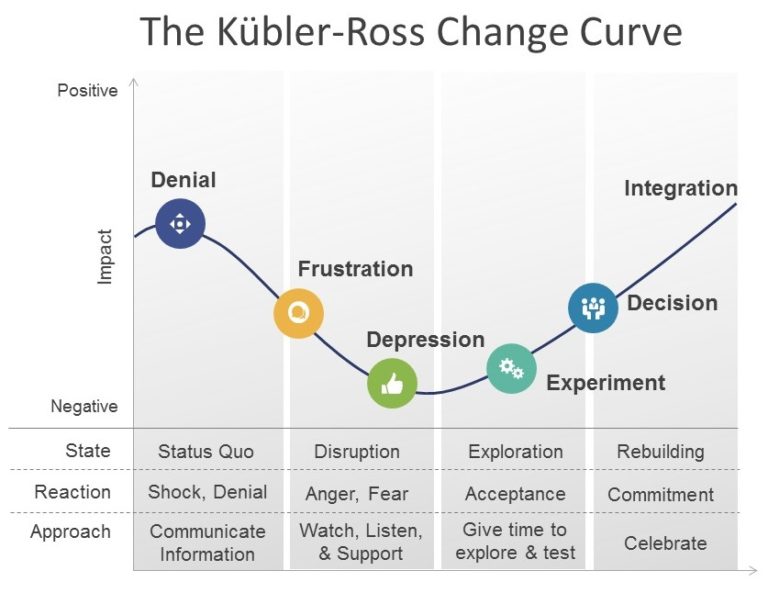
Kubler Ross Change Curve Mastering Business Analysis
The Kübler-Ross change curve has been used to analyse change processes in HE by Herrera et al. (2020) and Rodriguez-McClellon (2020), while Malone (2018) uses it to explain students' resistance.
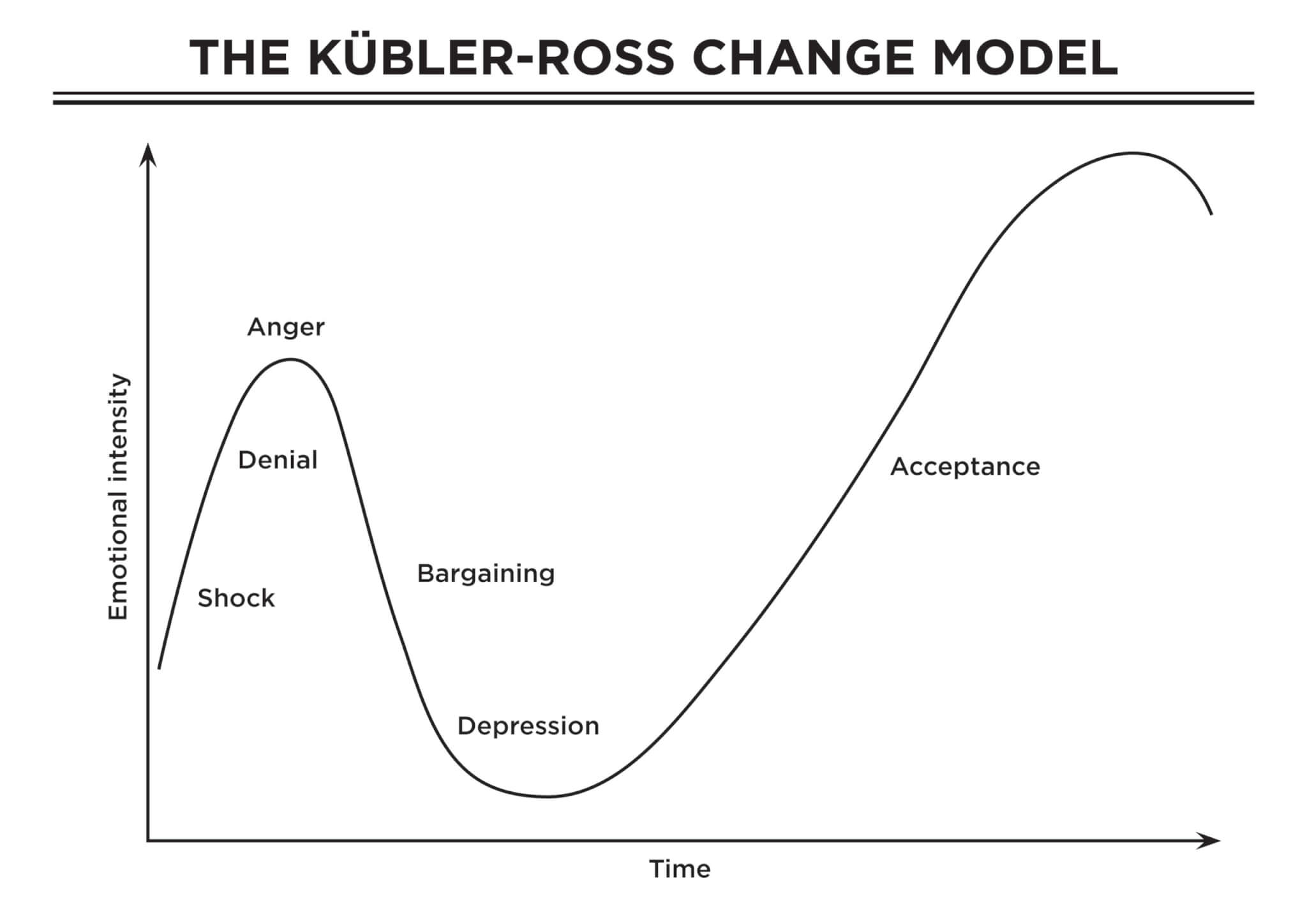
The KüblerRoss Change Cycle Lisa Stone Careers & Coaching
What Is the Kubler-Ross Change Model? The Kubler-Ross Change Model, also known as the Change Curve, provides a mind-expanding perspective on what people go through in the process of any change. Elisabeth Kubler-Ross goes deep into the meaning of grief in " On Grief and Grieving: Finding the Meaning of Grief Through the Five Stages of Loss ".